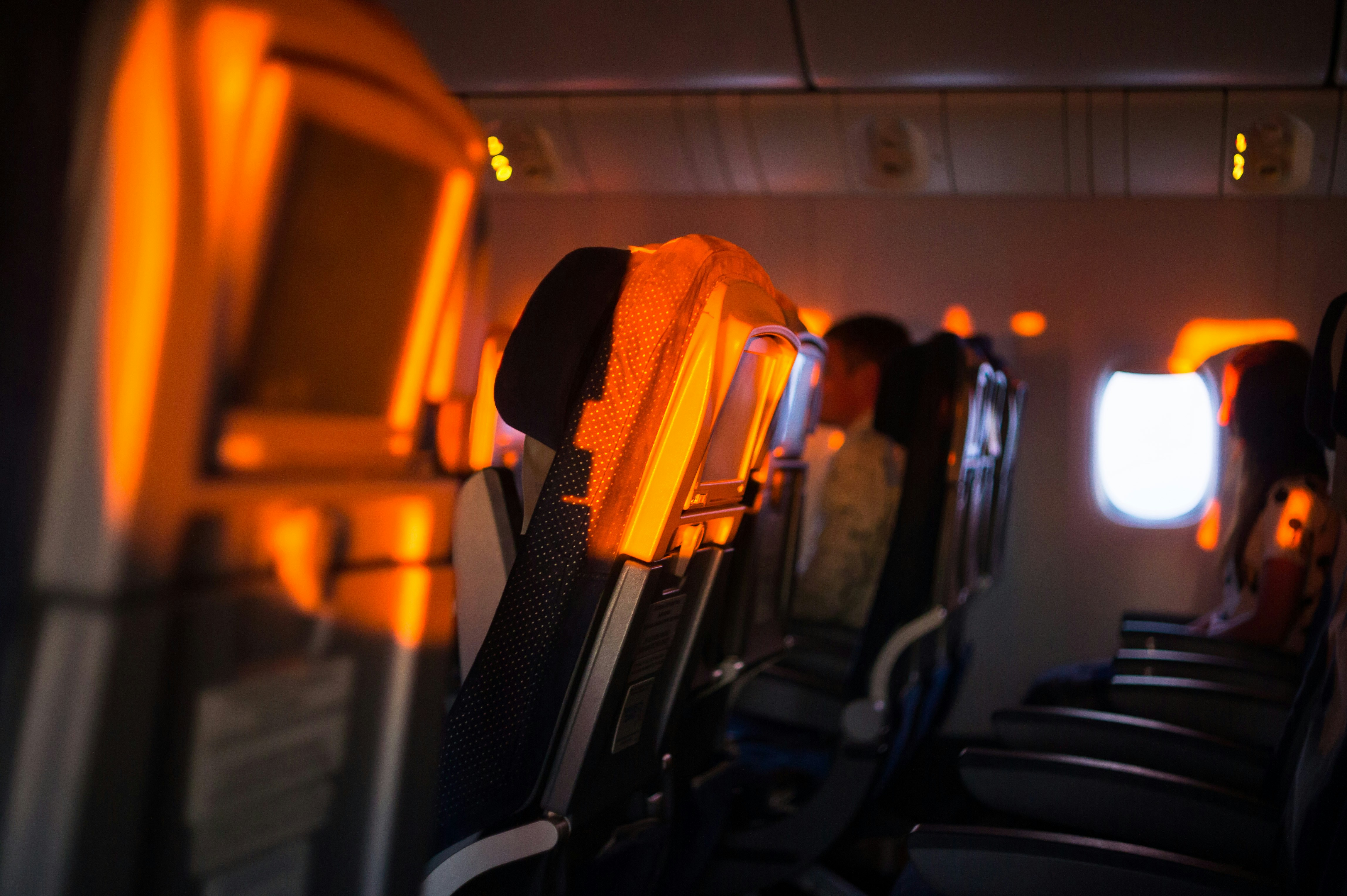Discover essential pre-flight and in-flight precautions to ensure a safe and stress-free journey. This comprehensive guide offers expert tips on health preparations, airline security, and emergency readiness, empowering travelers to navigate the skies with confidence. Elevate your air travel experience by mastering these crucial safety practices.
Introduction
Significance of Air Travel Safety
Flight travel is one of the fastest and most frequently employed means of transport today. Each day, millions of passengers take their flight; thus, everyone’s safety in the air is very essential. Although the aviation industry has been transformed over the decades enhanced tight measures have been put in place to ensure safety of passengers and crews. These protocols, which are now scarcely noticed when one ventures into the aircraft, are some of the reasons for the stately safety of the aviation industry. But for a safe flight, the task is not only that of the airline or the crew alone. A passenger is also required to display active precautions that will enable him or her be safe during the flight and leading to the flight.
It is therefore important for anybody that travels by air quite often to have a valid knowledge of measures that he or she should take before embarking on the journey and during the trip. For example, while you may be aware of such important aspects as aircraft safety systems to the nuts and bolts or unexpected reactions of the aircraft to drastic conditions being informed is protection against the unexpected on a flight. This article provides readers with a useful insight into safety measures before and during the flight, giving the reader all the necessary tips and tricks of safe flying. Thus, following such principles helps passengers to enhance the safety levels of the aircraft and those on-board.
It is therefore important for anybody that travels by air quite often to have a valid knowledge of measures that he or she should take before embarking on the journey and during the trip. For example, while you may be aware of such important aspects as aircraft safety systems to the nuts and bolts or unexpected reactions of the aircraft to drastic conditions being informed is protection against the unexpected on a flight. This article provides readers with a useful insight into safety measures before and during the flight, giving the reader all the necessary tips and tricks of safe flying. Thus, following such principles helps passengers to enhance the safety levels of the aircraft and those on-board.
1. Research and Planning Before the Flight
Outbound travel entails the need to perform a research and planning before making a flight booking. Users should first check the safety rank and opinions about certain airline; it gives the basic information about safety and service quality of the airline company. Several institutions and web resources gather this information; they estimate airlines in terms of safety records, age of the fleet, and the compliance with the safety standards. Selecting a safe airline that has a history of good safety record is one of the basic ways of perusing safety measures while on the journey. Also, choosing the seats that are close to the emergency exits, will make the odds of escaping in case of an eventuality much higher.
More considerations before embarking on the trip should be; selecting the airline together with checking the climatic conditions of the airports of origin and destination. There is always high potential in weather to interfere with the flight safety especially if the environment of the countries involved is characterized by storms or severe change in weather conditions. Passengers should also arrange to be on time when heading to the airport because; any form of haste is dangerous. Passport and visas being valid and the familiarity with the airline procedures of checking-in can still add to enhancing a safe and authoritative beginning of the trip.
More considerations before embarking on the trip should be; selecting the airline together with checking the climatic conditions of the airports of origin and destination. There is always high potential in weather to interfere with the flight safety especially if the environment of the countries involved is characterized by storms or severe change in weather conditions. Passengers should also arrange to be on time when heading to the airport because; any form of haste is dangerous. Passport and visas being valid and the familiarity with the airline procedures of checking-in can still add to enhancing a safe and authoritative beginning of the trip.
2. Health Preparations
Prevention entails considerable health preparations that people fail to remember during their desire to travel through the air. When planning for a flight, there is always important that passengers make sure that they are immune against diseases common in the destinations they are heading towards. A medical clearance before boarding may reveal compromised health that can deteriorate on a flight for, say, respiratory or cardiovascular trouble. Persons with chronic illnesses should speak with their physicians and bring adequate supply of drugs to cover the trip and any contingencies. Just as vital is the awareness of both the benefits/reductions of Circulatory health risks such as Deep Vein Thrombosis DVT whereby one should endeavor to move round and /or wear compression socks/stockings if prescribed.
Also, adequate intake of fluids and foods on board and prior the flight is also important with reference to health at such altitudes. Lack of moisture in airplane cabins the affects the body by causing dehydration and hence the jet lag make the body uncomfortable. The passengers should also take water often and should minimize on alcohol and caffeine, as they can make a person have less water in the body. Diets are also important; small and healthy meals should be taken especially when in a flight lest one may have tummy upsets. Hence, in as much as we want to underscore benefits of air transport, it is important to underline that by preparing themselves in aspects of health, travelers can avoid the worst of air transport impacts and have a safer journey.
3. Understanding Airline Security Protocols
One of the key factors of the modern airports is that the checkpoints to check the security of the passengers are rather strict. Some of such measures may be thought of as somewhat invasive but these are all meant to safeguard the lives of the passengers and crew in case of an incident. Knowledge about such programs enables the passengers to go about these standard measures effectively. For example, the banned items range from liquids to sharp objects that may be used by some passengers in evil intents. The rules listed below are usually important to be followed by the passengers in a bid to eliminate incidences of being delayed at the security check points and also make the boarding process to also be easier.
Of course, knowledge of the rights and responsibilities of the passengers themselves is also valuable for passengers when passing through security.For instance, the rules must be set on the use of electronic gadgets in the airplane, and the rules on screening with such devices. Furthermore, knowing what is permissible during a random check or body scanners can help to eliminate any stress or tension that a person may have about compliance with the security staff members. Having respect, equity with officials and preparedness at security checks not only speed up the process, but also avails the general flight safety to ensure that each passenger boarding the aircraft does equally not pose any danger.
Of course, knowledge of the rights and responsibilities of the passengers themselves is also valuable for passengers when passing through security.For instance, the rules must be set on the use of electronic gadgets in the airplane, and the rules on screening with such devices. Furthermore, knowing what is permissible during a random check or body scanners can help to eliminate any stress or tension that a person may have about compliance with the security staff members. Having respect, equity with officials and preparedness at security checks not only speed up the process, but also avails the general flight safety to ensure that each passenger boarding the aircraft does equally not pose any danger.
4. Pre-Flight Safety precautions
As soon as a passenger enters the aircraft, he or she should start getting acquainted with the general and, particularly, specific peculiarities of the flight. This involves identifying the exits nearest to him/her in case of an emergency and might not always be straight forward and counting the number of rows to the exit. It is useful information to know in case of an emergency where the visibility of the cabin is restricted for example by smoke. Also, passengers should familiarize themselves with how to buckle; seatbelt, use the oxygen masks and the life vests as pointed out by the cabin crew during the safety briefing.
Hearing the safety demonstration irrespective of how many times the identical message is repeated is mandatory before the flight. Some passengers are merely indifferent to such briefings especially if they frequently fly, but each aircraft may have slightly different safety features or procedures. Accustoming oneself with the particulars of a certain flight can define the difference between life and death in case of an emergency. Bothering to read through the safety card available in the seat pocket could also serve as a reminder and could provide, in clear diagrams and written, specific to the make and model of the plane you are using, information that you need to know in case of an emergency. Through being appropriately cautious and diligent in relation to the precautions that are adopted prior to air travel passengers assist in ensuring their own welfare and that of others.
Hearing the safety demonstration irrespective of how many times the identical message is repeated is mandatory before the flight. Some passengers are merely indifferent to such briefings especially if they frequently fly, but each aircraft may have slightly different safety features or procedures. Accustoming oneself with the particulars of a certain flight can define the difference between life and death in case of an emergency. Bothering to read through the safety card available in the seat pocket could also serve as a reminder and could provide, in clear diagrams and written, specific to the make and model of the plane you are using, information that you need to know in case of an emergency. Through being appropriately cautious and diligent in relation to the precautions that are adopted prior to air travel passengers assist in ensuring their own welfare and that of others.
5. In flight safety measures
SA is also another factor that or which should be upheld in flight as it is in preparation, possibly through simply fastening seat belts as a measure towards adherence of same. It is a general fact that flying is and always remains a turbulent affair, even the slightest of disturbances in the flight contribute significantly and can lead to casualties due to lack of proper seat belt restraints. Although it may at times feel comfortable to release a seatbelt during a comfortable flight, it is best to wear the seatbelt all through. Furthermore, there is need for passengers to consider their mobility within the vehicles and their environment of the cabin. The aisles are also quite narrow and while moving around especially when turbulence strikes one has to be very careful lest he or she falls or hits other passengers.
Another precaution that should be taken in-flight is also concerning the personal belongings’ storage. The overhead bins should be closed and properly locked so that they do not open during turbulence and cause projectiles of bags and similar objects; larger and dense loads should not be taken to the overhead bins, but rather beneath the seats. The cabin crew should also be observed by the passengers at all times During the flight, necessary advice in the event of an emergency will be provided by the crew. Continuing to maintain awareness and following these in-flight safety procedures guarantees that the passengers are as ready as they can be in case of an emergency and thus helps to make flying safer for every passenger on the plane.
Another precaution that should be taken in-flight is also concerning the personal belongings’ storage. The overhead bins should be closed and properly locked so that they do not open during turbulence and cause projectiles of bags and similar objects; larger and dense loads should not be taken to the overhead bins, but rather beneath the seats. The cabin crew should also be observed by the passengers at all times During the flight, necessary advice in the event of an emergency will be provided by the crew. Continuing to maintain awareness and following these in-flight safety procedures guarantees that the passengers are as ready as they can be in case of an emergency and thus helps to make flying safer for every passenger on the plane.
6. Emergency Preparedness
Although the odd of an in-flight emergency is rare, it is important to prepare each passenger that may be aboard. Knowledge of measures connected with emergency landings or evacuations can be of great assistance in the times of crisis. Many of the passengers should know the whereabouts of the oxygen masks and that they come automatically when the cabin pressure reduces. It is also important to be familiar with life vests that, for the most part, are located under the seat or in some other compartment, when flying over the waters. It should be appreciated that every passenger to this kind of transport should know where the emergency exits is/are and how to open them because they may be the main means of escape in case of an evacuation.
Perhaps the most important part of preparing for an emergency is being able to keep one’s head during an emergency. Panic disorients an individual or people by making approximately any or all decisions bad, and also interferes with the aimed and intended scope of evacuation. Any person on the plane has to adhere to the directions provided by the cabin crew, who are well equipped to handle such incidences and protect everyone on the plane. The concept of ‘bystander effect’ is unfit for passengers as it implies that these individuals should sit back and watch when there is an emergency, let alone that there is a minuscule chance this will happen: Nonetheless, a passenger having a general understanding of what should be done during an emergency will be more efficient in assisting than the one who needs to think about it for the first time. Hence the reason passengers who are mentally as well as physically prepared enhance their probability of survival while at the same time assisting others.
Conclusion
To sum it all, it is agreed that air travel safety is not only a function of the airline or the crew but also the passengers themselves. While the airlines and the respective regulatory bodies have put in place amazing safety precautions in place and this brings us to agree with the proposition that the passengers have a very significant part to play. Through this way, everyone from conducting extensive research and planning, following the existing health measures, knowing about the security measures, and being very careful about the preflight and inflight safety measures brings a positive change as a responsible passenger in making the traveling process safer and more secure.
As technology advances have it that the common trends in traveling through the skies also change, then the aspect of safety should also be dynamic. A passenger should update himself or herself with the everyday safety measures and must be alert throughout the flight process. In conclusion, on anybody’s scale of successful and safe, it doesn’t really matter if you got there or not, because it’s simply crucial to get there knowing you made the best effort in terms of preparation and information. With hard work and teamwork, everyone has a role to perform so as to ensure safe and efficient flight.
As technology advances have it that the common trends in traveling through the skies also change, then the aspect of safety should also be dynamic. A passenger should update himself or herself with the everyday safety measures and must be alert throughout the flight process. In conclusion, on anybody’s scale of successful and safe, it doesn’t really matter if you got there or not, because it’s simply crucial to get there knowing you made the best effort in terms of preparation and information. With hard work and teamwork, everyone has a role to perform so as to ensure safe and efficient flight.


























